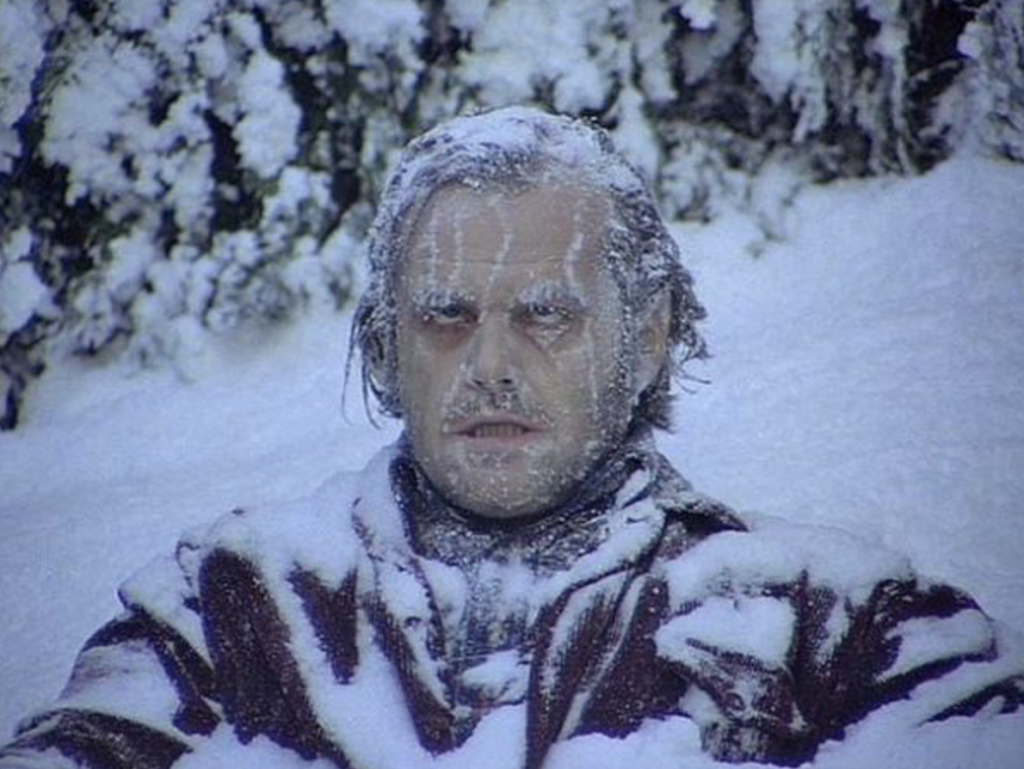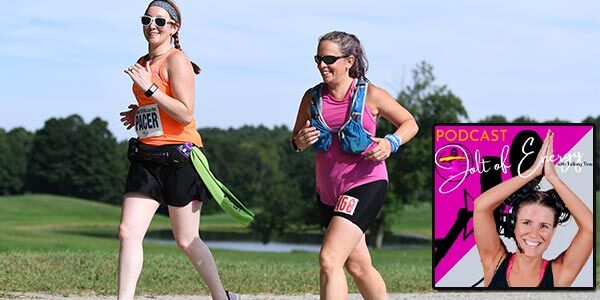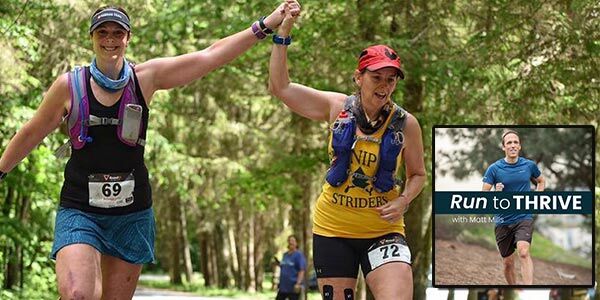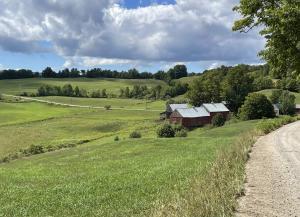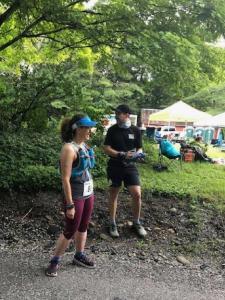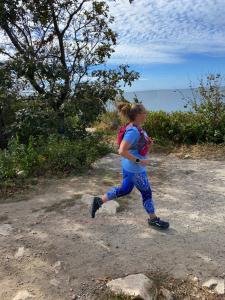(reprinted from Run Long ~ Run Strong Endurance Coaching Facebook page)
Cold weather running can be a challenge for most of us. We drag out all our tights, gloves, and hats and assemble them all into what can only be described as a refugee center for the Arctic. We check weather forecasts and try to plan our wardrobe according to what Mother Nature is throwing at us today. And then we are left with an amount of laundry that looks like it came from a family of ten. Now that winter seems to have descended on New England, it seemed appropriate to address the things we should and shouldn’t do as we head out the door.Most of us struggle with what to wear when the temperature dips. Should you layer up or go for the heaviest pair of tights and pair that with that awesome new sub-zero jacket that you just got? Mittens or gloves? Or should you just bail on the whole thing and hit the treadmill (gasp)? I asked a few friends if they wouldn’t mind sharing their tried and true tips and their go-to gear for when they want to get some miles in when the weather isn’t cooperating.
Chantelle Robitaille, coach and outdoor enthusiast, says, “Running in the cold doesn’t have to be miserable. Coming from northern Canada, I learned from a young age that there is no such thing as bad weather, just bad preparation.” She likes to layer up, adding that “if you plan it right, when you head outside you will feel a bit chilled, but you will warm up fast.” I’m all about the layers myself. Not only do layers trap air between them (which helps to insulate you), you can remove gear as you warm up and stuff in into your pack. You can’t do that if you wear just one shirt and a heavy jacket.
You also might want to consider a change of clothes when you are out for a long run in the cold. Once you start sweating it is very easy to get chilled if you need to slow down to negotiate a technical section of trail, or you are doing loops and are stopping to refuel and refill your hydration vest or bottles. “During a long run if it’s possible, I change shirts and whatever else I can to stay fresh. It makes a huge mental difference to throw on a clean, dry shirt or shorts after several hours on the trail, so I try to pack extras when I can,” says friend and fellow ultra runner Mike Crutchley.
Making sure the feet stay warm is a must, as the extremities are the most likely to suffer from frostbite or frost nip. “For socks, I’m pretty loyal to the Swiftwick Wool Line. They have all different ankle heights, which make them versatile in the running wardrobe depending on what type of terrain you’re running on or what type of footwear you’re reaching for that day,” says race director extraordinaire and fellow trail runner Jason Paganelli. Chantelle warns to “never double up on socks! A good pair of merino wool socks should do the trick here. Just make sure they go above the ankle and feel good in your shoes.” She recommends Smartwool, Darn Tough, or Voormi, and Mike echos the Smartwool endorsement.
I don’t know about you, but if my hands are cold then the rest of my body feels chilled. Lucky for us, there are many options for keeping those fingers warm and toasty even in sub-zero temperatures. “On your hands, this comes down to personal preference – but mittens will always keep you warmer than gloves,” says Chantelle. Brooks makes a great cold-weather mitten, as does Saucony and Nike. According to Chantelle, you can also try the lobster-claw style cycling mittens from Pearl Izumi or Craft. Whatever you choose make sure to bring a another pair of your favorite gloves or mittens with you, just in case you get wet or start to sweat. Cold, wet fingers are very susceptible to frostbite and that’s the last thing we need when we are out enjoying winter trails.
Finally, we need to keep our heads warm. A person loses 7-10% of their body heat through his or her head and while this may not sound like much, when the temperatures are below freezing, that heat loss can deplete a person enough to allow hypothermia to begin. This is especially important for those with less, um, insulation on their noggins, so I turned to my follically challenged friends to help me with this one. “I own a lot of hats! Beanies, skullcaps, ball caps, trucker hats, etc…I pack them all and for any occasion,” says Mike. Jason had a lot of advice for less-than-hirsute heads: “For me personally, being comfortable in the cold is always about maintaining the balance between staying warm and staying light. I hate to run with too much bulk, even in the winter, and that includes on my head. Luckily, the whole bald thing helps keep the weight down,” he says. One of Jason’s go-to toppers is his Smartwool Merino 150 Beanie (a super lightweight beanie made with a merino wool blend). He then added, “If I’m running at a lower intensity, or I know the weather is going to be on the colder side, I’ll reach for my Craft Race Hat. They sell these locally at Spark Bike Run Sports, and offer a TON of warmth.” Mike also says he changes his hats often, as this helps reduce the heat loss and keeps him comfortable over many miles.
Chantelle advises to use a buff as a versatile option for keeping the neck, chin, and ears extra warm. “You can cover up your neck, face and head with it, or just use it around your neck, or as a headband,” she says. These come in different weights, and fleece-lined ones are great for when the frost is really on the pumpkin. It also helps to cover your nose and mouth to ease your breathing when it’s really cold, and buffs make this easy to do. Chantelle added that “balaclavas also have their time and place- don’t worry about how it looks- people will think you are weird for running in the cold anyway!”
Finally, for those who suffer with Reynaud’s or a similar disorder, be extra sure to choose the correct socks and gloves/mittens for the temperature and bring changes of both, and hand warmers in the mittens or shoes go a long way towards keeping the hands and feet from getting too cold. Plan to have a place to warm up mid-run, or break your runs into two segments to reduce your exposure. And Chantelle says to eliminate the coffee before your run and opt for non-caffeinated beverages, as caffeine is a vasoconstrictor and may make keeping your extremities warm a real challenge.
There’s no reason to relegate yourself to the treadmill for the winter months, as long as you plan your route properly, stay hydrated and well-fueled, and choose the right clothing. So grab the mittens, the fleece-lined tights, and that silly looking balaclava and go exploring. Chantelle’s last piece of advice? “Have fun out there! Winter is a great time of year to see your favourite trails in a new light.”
Chantelle Robitaille is a coach at Carmichael Training Systems and holds a master of science degree in high altitude exercise physiology. Jason Paganelli, president of True North Running Company, is an avid road and trail runner and is the race director of many road and ultra events in the RI/MA area. Mike Crutchley has run numerous ultras and trail marathons and is a trusted trail partner of many years. I thank them all for their advice and recommendations for this article.

